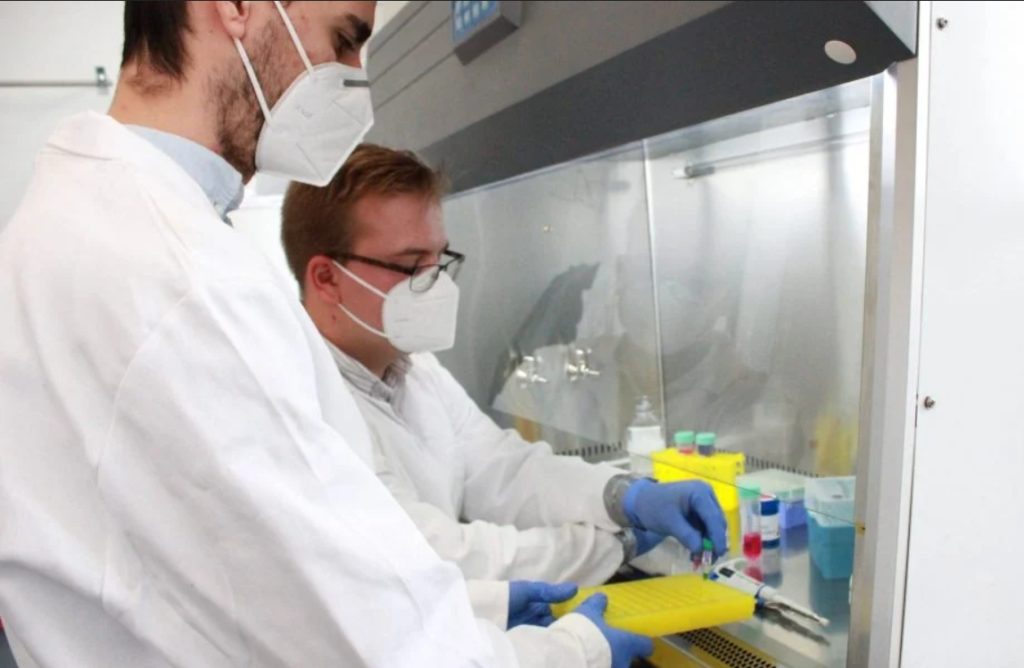two research doctors from Pécs who, despite their young age, achieved breakthrough success in the field of coronavirus research, because, as predicted earlier, they really achieved one of their goals by the end of the year and succeeded in inactivating the virus with the help of UV light.
This technique cannot be used to treat people, as it would require such strong UV radiation that it causes skin cancer and cataracts, but those who work with the coronavirus every day can now do so without risk. PestiSrácok.hu asked the owner of the successful company, RoLink Biotechnology Kft., Roland Hetényi, about the details of the research and the next step.
In February, we talked about the fact that you and your colleague Hanna Dániel did not choose the usual "residence life", but set off towards the world of research. You created your own company, RoLink Biotechnology Kft., with which you entered and won the competition of the National Research, Development and Innovation Office, and now here are your first results. What exactly have you achieved and what does it mean in everyday life?
We managed to disable both the original Wuhan and delta variants from infection. We used UV light for inactivation, which is beneficial because it leaves the spike protein and other viral proteins on the surface of the virus intact, so we can use them in further research, so we can work with it much more safely than in any biological laboratory. You don't have to work in a spacesuit, in a BSL-4 certified lab with an infectious virus. This opens up new opportunities in domestic Covid research.
Who or who helped your work?
Our main support was the virologists from Pécs. The location of the research is the János Szentágothai Research Center in Pécs, where we work together with several other research groups.
How to imagine this experiment? Do you take the coronavirus, put it under UV light and wait until it becomes inactive? How did the idea of using UV light come about?
The virologists in Pécs inactivate the coronavirus in a BSL-4 laboratory, where they irradiate the virus solution in a closed tube with UVC light for thirty seconds in a cylindrical steel chamber developed by us. UV inactivation itself is an old technology; we chose this because infection renders the virus incapable of destroying the viral proteins, so we are free to continue working afterwards. The intact viral protein is absolutely important for examining the functioning of the immune system.
How did you get the coronavirus?
We receive the coronavirus from the virus laboratory and then we can further experiment with it, for example, we prepare the experiments necessary to test the immune system.
You mentioned earlier that there are places where, for example, wards are disinfected with the help of UV light. Do we already have one? Is it important that they walk through a ward with UV light or disinfectant?
As far as I know, in several clinics, examiners and medical rooms are disinfected using UV light. The UV light is also suitable for surface disinfection on surfaces it touches. The advantage is that it is a chemical-free disinfection technology. The disadvantage is that where the light doesn't shine, it doesn't work.

Photo: University of Pécs
There are already several variants of the coronavirus. Can you neutralize them all with this?
The original Wuhan and delta variants have also been inactivated. We experienced minimal deviations. It definitely matters how high the concentration of the virus is in each sample. In principle, it can be suitable for all variants, but this must be checked in each case for the sake of safety.
What do you think about the current virus variants? Is it possible that after a while it will no longer mutate and we will get rid of it?
This is difficult to predict. According to many, it turns into a flu-like seasonal illness. What is certain is that it is extremely disadvantageous that a significant part of the population is still not vaccinated. For the virus, this is a free area where it can change freely and create new, more dangerous variants.
There are people all over the world who, despite living with an unvaccinated patient infected with the coronavirus, did not catch the virus. What could be the reason for this? Are they being investigated too?
In part, the National Genome Program also deals with these people, because there really are people who do not get infected, even though they are unvaccinated, but it is not yet known why.
You had several commitments in the project, this was one of them, this is already a tick. What's next and how are you doing?
The following is a test of the immune system with inactivated coronavirus. To do this, we separate blood plasma and immune cells from human blood samples, and then examine the reaction of the blood of various vaccinated/non-vaccinated donors directly with the coronavirus. One of the great advantages of this method is that we can test directly with the coronavirus, not with some artificially produced part.
Photo: University of Pécs. Opening image: Roland Hetényi/Source: pestisracok.hu













